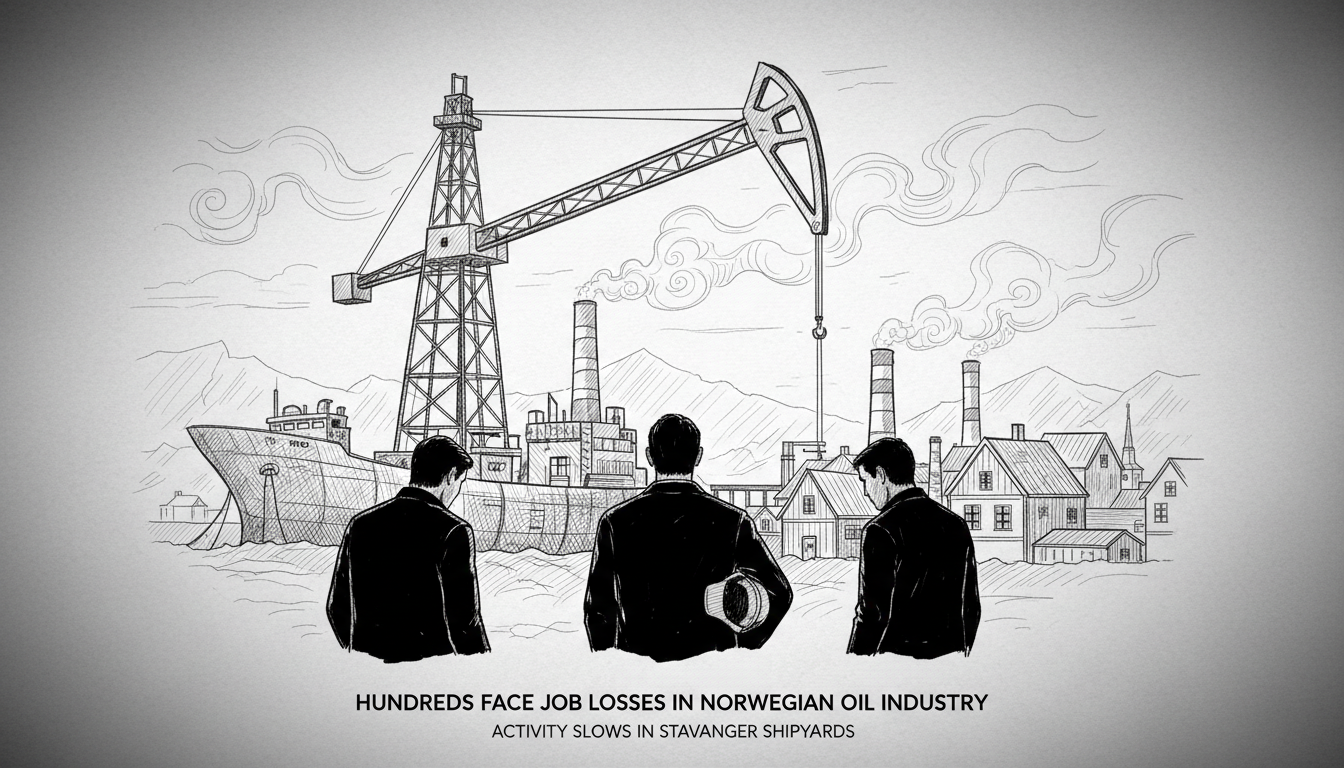Norwegian oil workers face growing uncertainty as major companies announce significant workforce reductions. Worley Rosenberg shipyard in Stavanger may cut up to 300 positions, representing nearly one-third of its workforce. The potential layoffs have created tension among employees who remember the last major oil downturn.
Aleksander Eriksen, a 31-year-old union leader at the shipyard, described the challenging atmosphere. Workers are dealing with many unanswered questions about their future. Eriksen experienced job loss during the previous oil crisis about ten years ago. Despite thirteen years of experience, he acknowledges the psychological toll of employment uncertainty.
The current situation reflects a broader trend across Norway's oil and supplier industry. After years of substantial oil revenues, several companies are now scaling back operations. Multiple oil companies have already implemented workforce reductions, with more likely to follow.
Knut Nesland, a union representative at Halliburton, confirmed restructuring plans affecting multiple departments. The international service company surprised workers by announcing cuts despite recent hiring and overtime demands. Industry experts point to decreased activity levels as the primary driver.
Oil analyst Tore Guldbrandsøy from Rystad Energy believes investment peaks have passed on the Norwegian continental shelf. After years of growth, indicators suggest declining activity in coming years. He recommends shipyards dependent on traditional offshore projects consider transitioning to international offshore wind projects.
The Johan Sverdrup field, Norway's third-largest oil field, continues producing up to 755,000 barrels daily. Long-term projections show ongoing global demand for oil and gas extending well into the next decade. However, Norwegian Petroleum Directorate scenarios all indicate declining production toward 2050.
Union representative Bjørn Asle Teige from Equinor describes a divided picture. Daily operations continue normally, but development and exploration activity shows reduced pressure. He notes the absence of major new discoveries scheduled for development after 2027.
Equinor plans strategic workforce management through natural attrition. The company expects approximately 10,000 workers to retire by 2030, representing over 40% of its 24,000 employees. This approach may mean fewer new hires rather than direct layoffs.
Recent business surveys in Rogaland show declining optimism. While 60% of companies planned hiring increases during the past four years, only 30% now report similar intentions. Fifteen percent anticipate workforce reductions.
Regional employment statistics remain stable despite the sector's challenges. Unemployment in Rogaland stays low, though media reports frequently highlight oil and gas workforce reductions. Temporary and contracted workers provide flexibility during adjustment periods.
Chief economist Kyrre M. Knudsen from Sparebanken Sør-Norge sees limited cause for alarm. Current activity levels remain reasonably strong, and many workforce reductions were anticipated. He identifies two main factors: completed major projects and international companies preparing for lower oil prices.
While most experts dismiss concerns about a new oil crisis, the situation remains serious for affected companies and workers. The Norwegian oil industry appears entering a transition phase rather than facing immediate collapse. Strategic adaptation will determine which companies and workers navigate these changes successfully.

